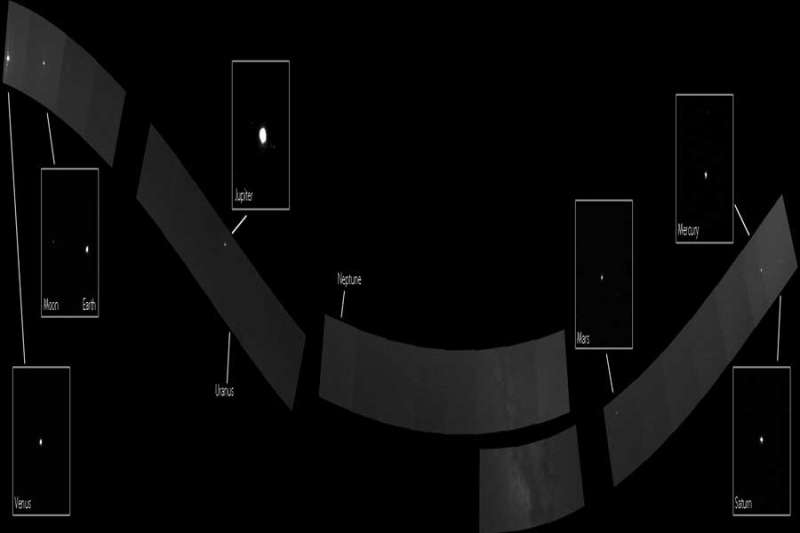Explanation: If you looked out from the center of the Solar System, what would you see? Nearly such a view was taken recently from the MESSENGER spacecraft currently orbiting the Sun from the distance of Mercury. The Sun's planets all appear as points of light, with the closest and largest planets appearing the brightest. The planets all appear to orbit in the same direction and are (nearly) confined to the same great circle around the sky -- the ecliptic plane. Mercury, Venus, Earth, Mars, Jupiter, and Saturn are all visible in the above horizontally compressed image, while the positions of Uranus and Neptune are labeled even though they are too faint to make out. Pluto, which has had its planetary status recently called into question, is much too faint to see. Earth's Moon is visible, however, as are the Galilean moons of Jupiter. The above image is the reverse of one taken from the outside of the Solar System in 1990 by Voyager 1. MESSENGER, which has flown by Mercury three times now, is on schedule to enter orbit around the Solar System's innermost planet next month.
1999 2000 2001 2002 2003 2004 2005 2006 2007 2008 2009 2010 2011 2012 2013 2014 2015 2016 2017 2018 2019 2020 2021 2022 2023 2024 2025 |
Январь Февраль Март Апрель Май Июнь Июль Август Сентябрь Октябрь Ноябрь Декабрь |
NASA Web Site Statements, Warnings, and Disclaimers
NASA Official: Jay Norris. Specific rights apply.
A service of: LHEA at NASA / GSFC
& Michigan Tech. U.
|
Публикации с ключевыми словами:
Solar System - солнечная система
Публикации со словами: Solar System - солнечная система | |
См. также:
Все публикации на ту же тему >> | |
